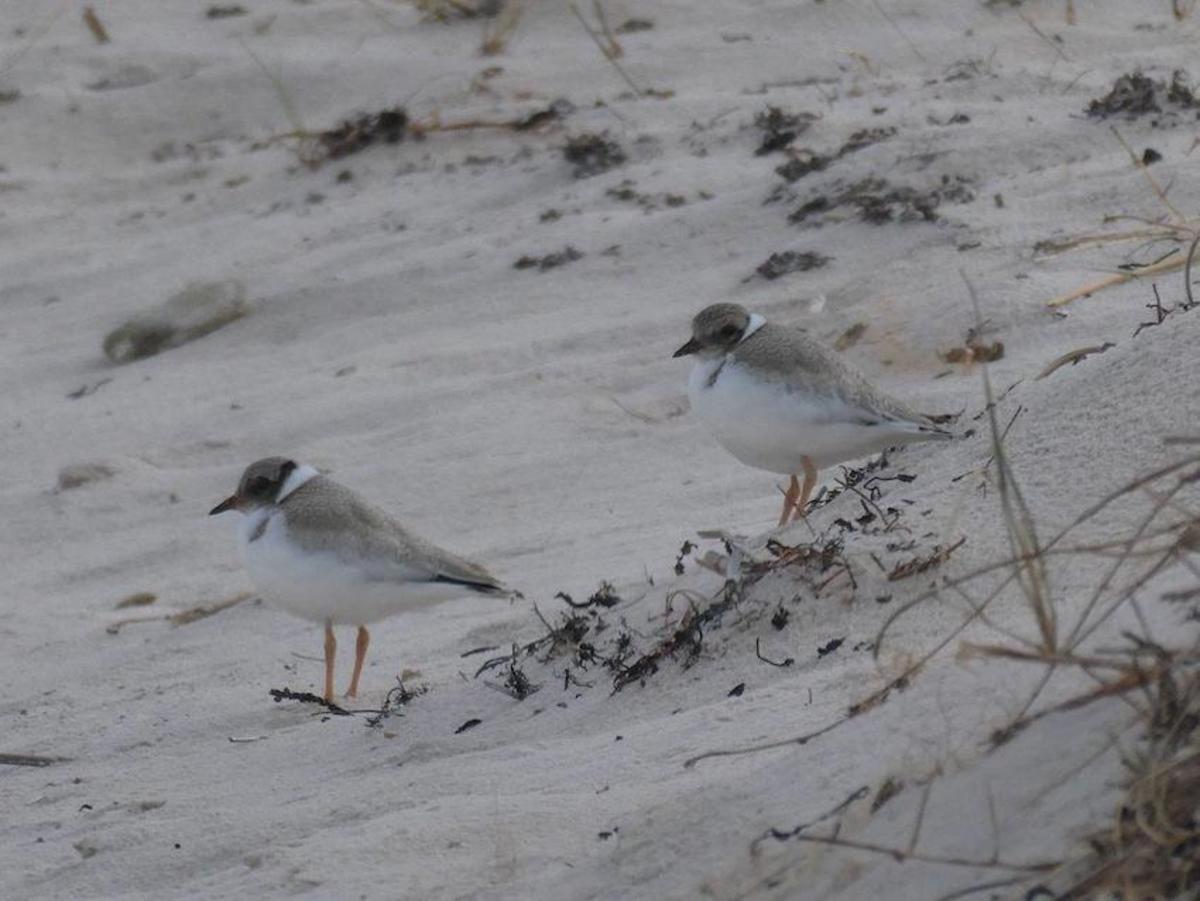Summer brings plover success
Staff Reporters
27 February 2023, 3:00 AM
 Hooded plover fledglings at Normanville South.
Hooded plover fledglings at Normanville South.Environment organisations and volunteer groups are celebrating the successful fledging of a dozen Hooded Plover chicks across Fleurieu beaches.
Landscapes Hills and Fleurieu, Green Adelaide, BirdLife Australia, local councils and a dedicated team of volunteers work through the summer to fence off nesting sites, raise beachgoer awareness of and monitor the progress of nesting pairs and chicks.
From the moment the parent birds decide where to nest and lay eggs, they are in constant threat from foxes and dogs, human disturbance, vehicles on beaches, rubbish and even high tides.
Life is tough on the beach so reaching the age of fledging – when the chicks are able to fly at around five weeks old – is a celebration.
Landscapes Hills and Fleurieu Coast and Marine Project Officer Caroline Taylor says the outcome this summer defies recent trends for some beaches in the region.
“These fledglings have been mostly from nesting sites between Port Willunga and Lady Bay.
“The birds have had difficulty nesting and raising chicks to fledging age along this part of the coast for the past two seasons, so we’re really happy to see they’ve succeeded this year.
“We also have a new nesting site on Middleton Beach, further east than normal, which is being occupied by two of last year’s fledglings.
“It shows the importance of flagging and monitoring the chicks to see where they resettle in future breeding seasons.”
Closer to the city, a fledgling was recorded at Seacliff – a beach where the birds have generally had success but last year produced no fledglings, despite their many attempts.
Green Adelaide Team Leader Coast and Seas Tony Flaherty says it’s encouraging to see a chick make it to the all-important flying stage at this busy metro beach.
“So far this season we’ve observed 12 fledglings across the whole Adelaide and Fleurieu coast and we still have chicks and nests on the beach, so there’s a chance we may have more.
“There are only around 70 hooded plovers across Adelaide and the Fleurieu Peninsula combined, so every individual counts.”
Ms Taylor and Mr Flaherty agree that this wouldn’t be possible without all the people working to help hooded plovers survive.
“We’d like to thank and acknowledge local beach-goers who all contribute to helping these birds with sensible behaviour around nesting sites, and of course the volunteers who help to educate beach users and keep an eye on the nests,” Ms Taylor says.
“This support has been pivotal, particularly as these birds have survived the busy Christmas school holiday period which is always a challenging balance.”
As always, beach-goers are reminded to follow signage around nesting sites – stay away from fenced nesting areas, walk past at the waterline, ensure dogs are on leads and have a chat to volunteers if they are around.
Learn more about hooded plovers in the region on the Green Adelaide website.